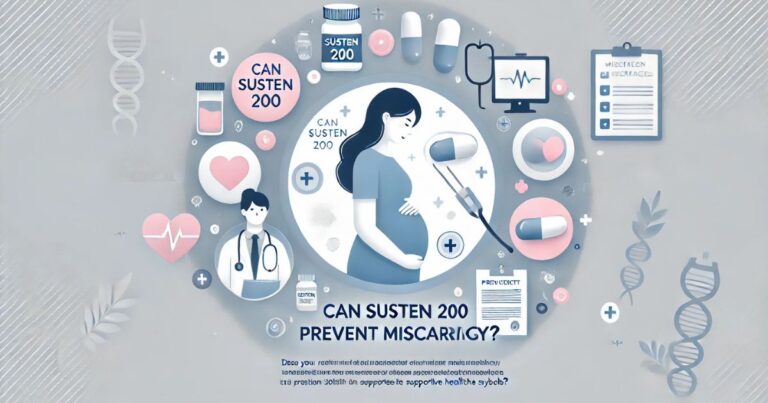Which Activity Can Lower the Water Table?
Water is one of our most important natural resources. The water table is the level underground where the soil or rock becomes saturated with water. It is a critical part of our environment because it feeds wells, rivers, and lakes. However, certain human activities can lower the water table. In this article, we will explain what the water table is, discuss activities that can lower it, and provide solutions to help prevent this problem. We will focus on one major activity—excessive groundwater extraction—that is known to lower the water table.
Introduction
Imagine the ground beneath your feet as a giant sponge. This sponge holds water in the spaces between soil and rocks, and the top level where the sponge is completely wet is called the water table. The water table can change with the seasons and with different human activities. When the water table drops too low, it can lead to problems such as dry wells, reduced water supply for plants and animals, and even land subsidence, where the ground sinks.
In many parts of the world, the water table is being lowered by the same activity over and over again. One of the most common causes is excessive groundwater extraction. This means that more water is being taken out of the ground than is being naturally replaced by rain and other sources. In this article, we will look closely at how excessive groundwater extraction lowers the water table and discuss what can be done to address this issue.
Understanding the Water Table
Before we talk about the activities that lower the water table, let’s understand what the water table is:
- Definition:
The water table is the underground boundary between the area where the soil is dry and the area where the soil is filled with water. - How It Works:
Rainwater seeps into the ground and fills the spaces between rocks and soil particles. This water is stored in an area called an aquifer. The water table is the upper surface of that stored water. - Why It Matters:
The water table is important because it is the source of water for wells, springs, and many natural ecosystems. It also helps support agriculture, drinking water supplies, and industry.
Activities That Can Lower the Water Table
Many human activities can affect the water table. Some of these activities include:
- Excessive Groundwater Extraction:
The most significant activity that lowers the water table is the overuse of groundwater. When water is pumped out faster than it can be replenished, the water table drops. - Urbanization:
The development of cities and towns can reduce the natural recharge of groundwater. When land is covered by roads, buildings, and pavement, rainwater cannot easily soak into the ground. - Deforestation:
Trees and plants play an important role in the water cycle by helping water to seep into the soil. When forests are cut down, less water is absorbed, and the water table may drop. - Agricultural Practices:
Large-scale irrigation, especially when not managed well, can use up a lot of groundwater. When more water is used than is naturally replaced, the water table falls.
Among these activities, excessive groundwater extraction is the main cause of a lowering water table. Let’s look at this in more detail.
Excessive Groundwater Extraction
What Is Groundwater Extraction?
Groundwater extraction is the process of taking water from aquifers using wells and pumps. This water is then used for various purposes such as:
- Agriculture:
Water is used to irrigate crops. In many farming regions, a large amount of groundwater is needed, especially in areas with little rainfall. - Domestic Use:
Many communities rely on groundwater for drinking, cooking, bathing, and other household needs. - Industrial Use:
Industries may use groundwater in manufacturing processes or for cooling systems.
How Does Groundwater Extraction Lower the Water Table?
When water is pumped from the ground, it leaves behind an empty space in the aquifer. If the rate of extraction is higher than the rate of natural recharge (when rainwater refills the aquifer), the water table will begin to drop. Here is a step-by-step explanation:
- Pumping Water:
Wells and pumps draw water from underground aquifers. This water is then distributed for use in agriculture, homes, or factories. - Depletion of Aquifers:
As water is removed, the volume of water in the aquifer decreases. Over time, if water is not being replaced by rainfall or other sources, the aquifer becomes depleted. - Lowering of the Water Table:
With less water in the aquifer, the water table—the upper level of groundwater—drops. This means that water will be found at a greater depth underground. - Consequences:
- Dry Wells: When the water table drops below the level of the well, it may become dry or require deeper drilling to reach water.
- Land Subsidence: The removal of water can cause the ground to collapse or sink, damaging buildings and infrastructure.
- Loss of Surface Water: Rivers, lakes, and wetlands that depend on groundwater may shrink or disappear, affecting ecosystems and wildlife.
Real-World Examples
In many parts of the world, excessive groundwater extraction has had serious impacts. For example:
- California’s Central Valley:
Farmers in this region rely heavily on groundwater for irrigation. Years of over-extraction have led to a significant drop in the water table, causing dry wells and land subsidence. - The Middle East:
In arid regions, groundwater is a vital source of water. Overuse has lowered the water table in many areas, leading to water shortages and increased conflicts over water resources. - India’s Punjab and Haryana:
Intensive agricultural practices in these states have led to heavy reliance on groundwater. The water table has been declining rapidly, threatening the sustainability of local water supplies.
Other Activities That Contribute to Lowering the Water Table
While excessive groundwater extraction is the primary cause, other human activities also play a role:
Urbanization
As cities expand, natural land is covered with concrete and asphalt. This has several effects:
- Reduced Infiltration:
Rainwater cannot easily seep into the ground when it falls on paved surfaces. Instead, it runs off into drainage systems or waterways, reducing the amount of water that recharges the aquifer. - Increased Demand:
Urban areas often have a high demand for water. When groundwater is used to meet this demand, it can contribute to a lower water table.
Deforestation
Trees and vegetation help water to infiltrate the soil. Removing forests has the following impacts:
- Loss of Natural Recharge:
Without trees, less water is absorbed by the soil, and more water is lost as surface runoff. - Soil Erosion:
Deforestation can lead to soil erosion, which further reduces the soil’s ability to store water and recharge aquifers.
Agricultural Practices
Certain farming techniques can also lower the water table:
- Irrigation Without Recharge:
In some regions, irrigation systems do not allow excess water to return to the groundwater supply. This means that once water is used, it does not help refill the aquifer. - Crop Choices:
Growing water-intensive crops in areas with limited rainfall can put extra pressure on groundwater resources, leading to a falling water table.
Solutions to Prevent a Lowering Water Table
Addressing the problem of a lowering water table requires a mix of better management practices, technology, and policy changes. Here are some solutions:
1. Sustainable Groundwater Management
- Regulate Extraction:
Governments can set limits on how much water can be extracted from an aquifer. By enforcing these limits, the natural recharge process can catch up with the extraction rate. - Monitor Water Levels:
Regular monitoring of the water table can help detect problems early. With modern technology, it is possible to track changes in groundwater levels in real time.
2. Improved Agricultural Practices
- Efficient Irrigation:
Using water-saving techniques such as drip irrigation can reduce the amount of groundwater needed for crops. This method delivers water directly to plant roots, minimizing waste. - Crop Rotation and Selection:
Farmers can choose crops that require less water and use techniques that help retain soil moisture. Crop rotation also improves soil health, which can enhance water retention.
3. Urban Planning and Green Infrastructure
- Permeable Pavements:
In urban areas, using permeable materials for roads and sidewalks can allow rainwater to seep into the ground instead of running off. - Green Spaces:
Parks, gardens, and other green spaces help absorb rainwater and recharge the groundwater. Urban planning that includes ample green infrastructure can mitigate the impact of city development on the water table.
4. Reforestation and Conservation
- Planting Trees:
Reforestation projects can help restore the natural water cycle. Trees and vegetation help the soil absorb water and reduce runoff. - Protecting Natural Areas:
Conserving wetlands, forests, and other natural areas is essential for maintaining a healthy water cycle. These areas act as natural sponges, absorbing water and releasing it slowly into the ground.
5. Public Awareness and Policy Changes
- Education Campaigns:
Informing the public and businesses about the importance of water conservation can lead to more sustainable practices. - Incentives for Conservation:
Governments and organizations can offer incentives for using water-saving technologies and methods. Subsidies for efficient irrigation systems or tax breaks for sustainable practices can encourage better water management. - Regulatory Frameworks:
Strong policies and laws that promote sustainable water use are essential. This includes regulations on groundwater extraction, water pricing, and conservation measures.
The Role of Technology in Water Management
Modern technology can help solve the problem of a lowering water table. Here are some examples:
- Remote Sensing and GIS:
Satellite images and geographic information systems (GIS) can be used to monitor land use, water usage, and changes in the water table over time. This data helps in planning and management. - Smart Irrigation Systems:
These systems use sensors to measure soil moisture and weather forecasts to deliver the right amount of water at the right time. This technology reduces water waste and helps maintain the water table. - Water Recycling and Reuse:
Technologies that treat and recycle wastewater can reduce the demand for groundwater. Reusing water for industrial, agricultural, or even household purposes can lessen the overall extraction from aquifers.
How Communities Can Get Involved
Protecting the water table is not just the job of governments and industries—it is a responsibility that everyone shares. Communities can play an important role in maintaining a healthy water table through the following actions:
- Community Monitoring Projects:
Local groups can set up projects to monitor the water table in their area. This can involve simple methods like measuring the water level in a well and sharing data with local authorities. - Water Conservation Initiatives:
Communities can organize awareness campaigns, workshops, and events that teach water-saving techniques. Small changes in daily habits, like fixing leaks or reducing water waste, can have a big impact over time. - Supporting Local Policies:
By supporting policies and local government measures that promote sustainable water use, communities can help ensure that the water table remains at a healthy level. Voting for leaders who prioritize environmental sustainability is one way to make a difference. - Education in Schools:
Teaching children about the water cycle and the importance of groundwater can create a future generation that values water conservation. Schools can organize projects and field trips that show students how local water sources work.
Conclusion
The water table is a vital part of our natural environment, providing water for our homes, farms, and industries. Among the many activities that can lower the water table, excessive groundwater extraction stands out as the primary cause. When water is removed from aquifers faster than nature can replace it, the water table drops, leading to problems like dry wells, land subsidence, and reduced water supply for ecosystems.
In addition to over-extraction, urbanization, deforestation, and inefficient agricultural practices also contribute to a falling water table. However, there are many solutions available to address this challenge. By managing groundwater extraction responsibly, using water-efficient irrigation methods, planning cities with green infrastructure, and restoring forests, we can work together to protect our water resources.
Technology plays a key role in these efforts. From remote sensing and smart irrigation systems to water recycling and community monitoring, modern tools help us track and manage our water use more effectively. Involving communities through education and local conservation projects further strengthens these efforts.
In simple terms, the main activity that can lower the water table is excessive groundwater extraction. By recognizing this, we can take steps to reduce water usage and ensure that the water table remains at a healthy level for future generations. With careful planning, sustainable practices, and community involvement, we can protect our water resources and maintain a balanced and healthy environment.
Remember, every drop counts. Taking action today to manage our water wisely will help secure a better, more sustainable future for everyone.
Also Check:
• How Overfishing and the Decimation of Forests Prove Harmful: A Comprehensive Analysis
• Can There Be Development Without Overuse? Exploring Sustainable Pathways






